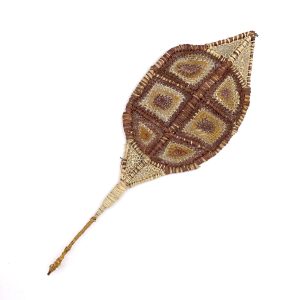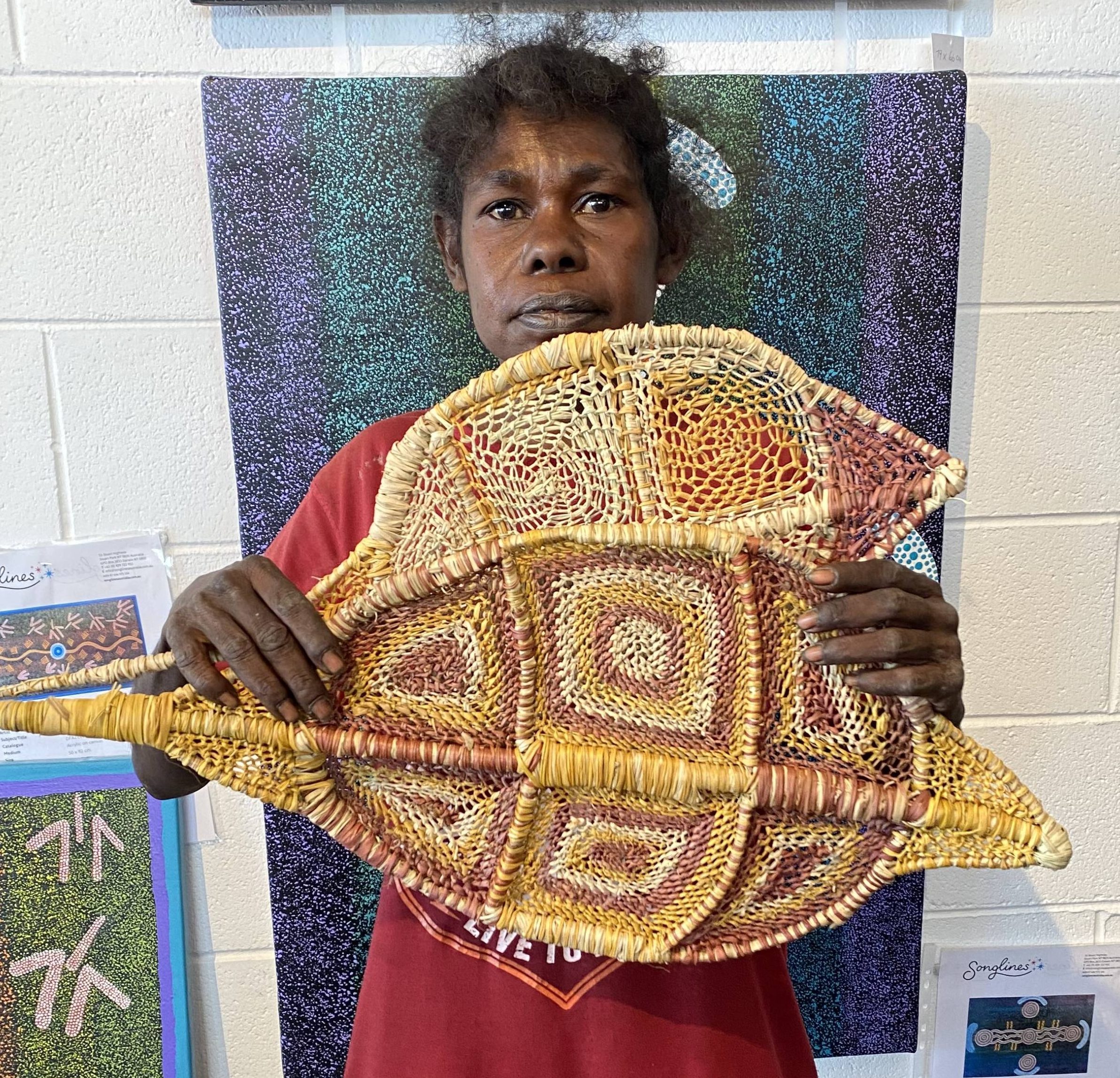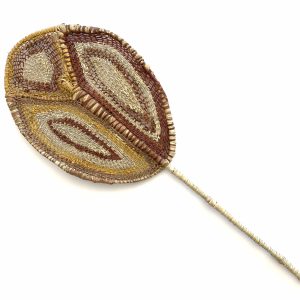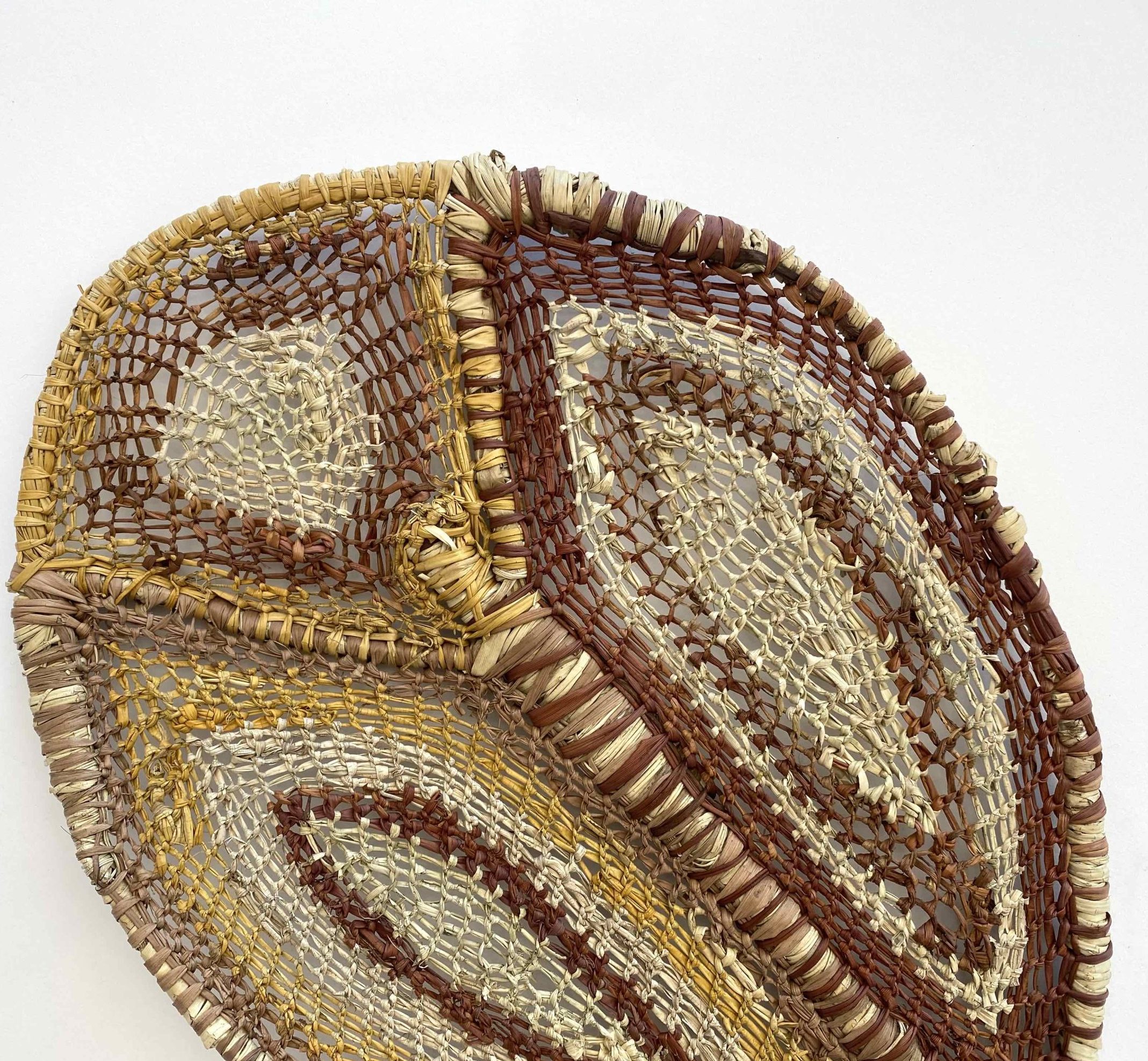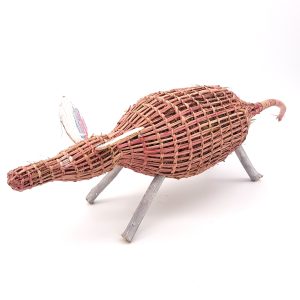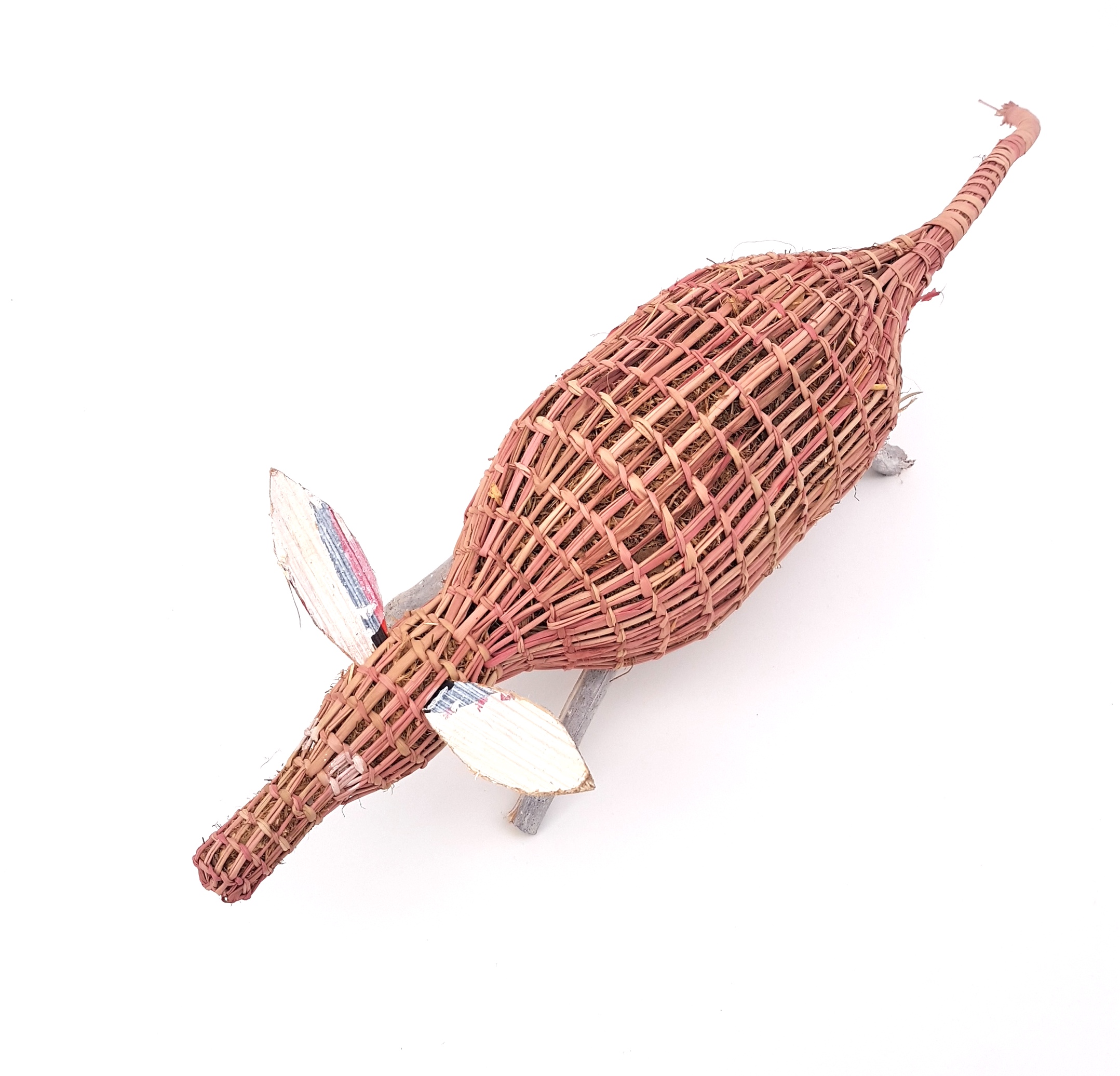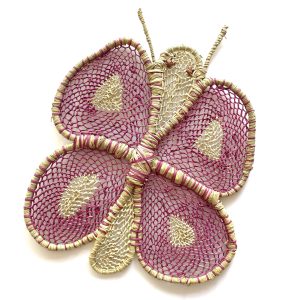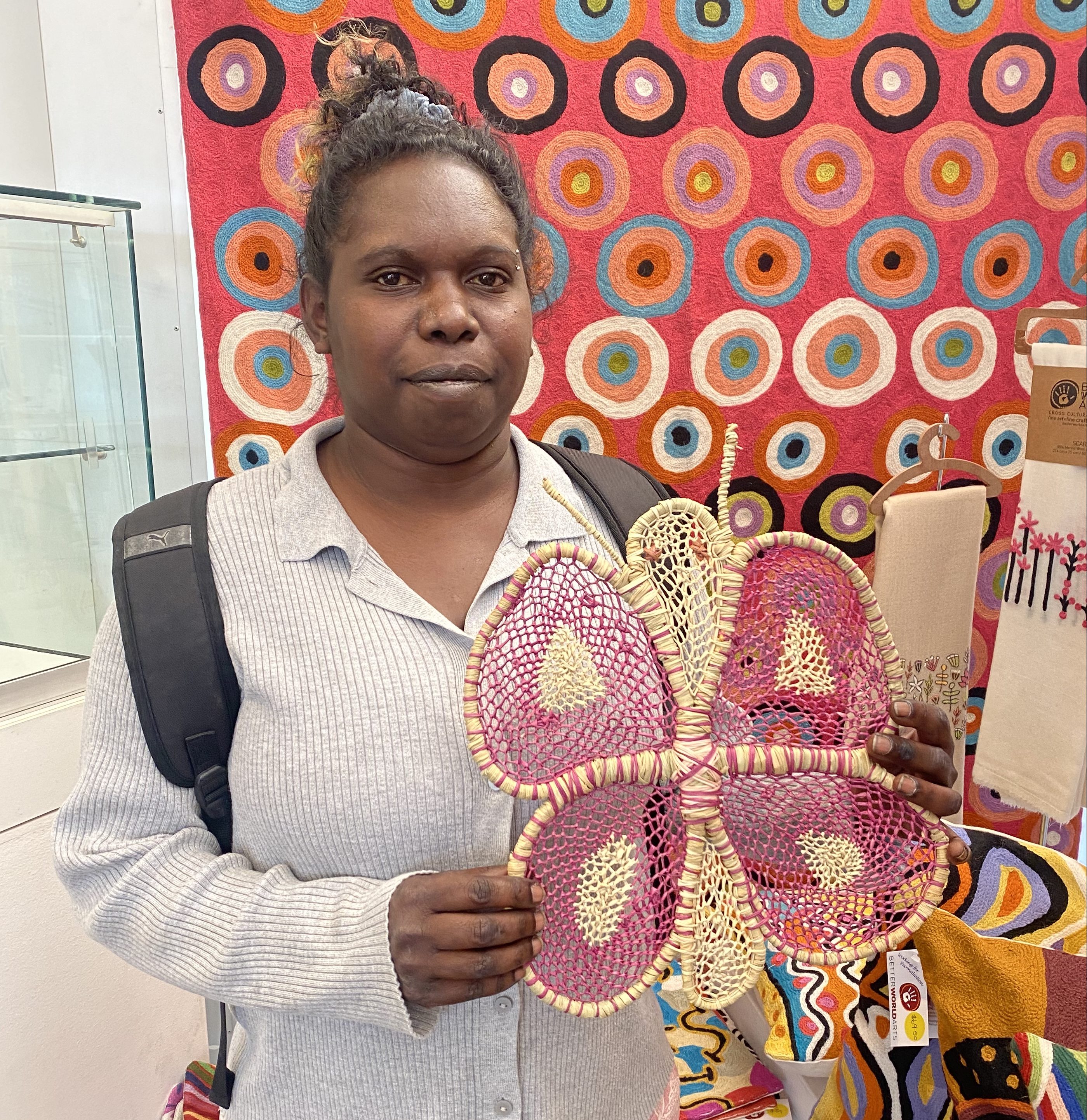Description
Vivianne is an accomplished weaver who makes baskets, mats, earrings and sculptures. She was born in 1959 and is a Kunwinjku speaker whose country is in West Arnhem Land. Her clan is Djordi.
She often teaches Pandanus weaving at Songlines when we hold workshops.
About Pandanus weaving
Contemporary Arnhem Land weavers are renowned for their beautifully executed Pandanus weavings and use of local dyes to create a wide palette of colours. Only women collect and process Pandanus. People often ask about how weavings are priced and we explain the various laborious and time consuming processes involved in creating a weaving.
Collecting Pandanus
This is the first part of the process. Only the new growth (erect shoots emerging from the top of the tree) is used and the ladies use a ‘hook stick’ to harvest as they are usually high in the area. It requires strength, skill and knowledge of which trees/places yield the best source. Pandanus grows best in areas that experience seasonal dampness or are near watercourses.
Stripping
There are a few steps to stripping Pandanus and it is surprisingly difficult to do. An experienced person makes it look easy! On either side of the leaf are thorns/barbs running in the opposite direction to the stripping action and these need to be avoided.
Dyeing
This is almost always done over an open fire in large pots. Colours may be roots, berries, flowers or, in the case of green, a part of the Pandanus plant. Some of the dyes are seasonal and/or very location specific. Things may be added to the dye mix to strengthen and change colours, such as ash. The weavers take great care and pride in creating vivid colours and often will trade dyes and additives. The usual time to dye is immediately after the Pandanus has been stripped.
Weaving
A range of traditional, borrowed and innovated weaving techniques are used in contemporary Pandanus weavings. Larger sculptures are made with a palm wood structure and infilled with lace like weaving. Smaller sculptures use Pandanus fibre for the framework as well.
References Twined Together (Kunmadj Ngalehnjaleken) edited by Louise Hamby




